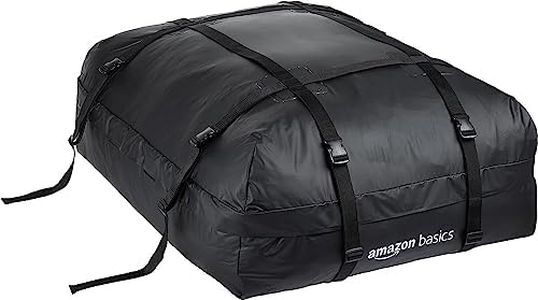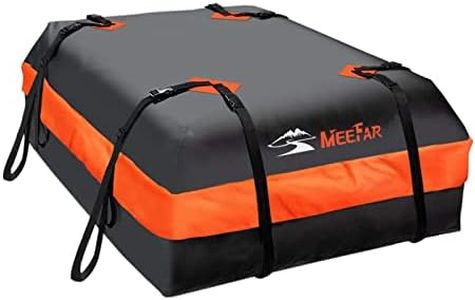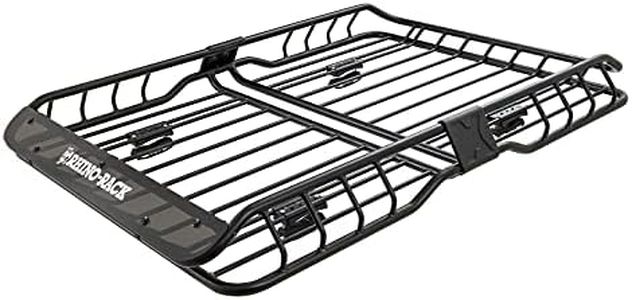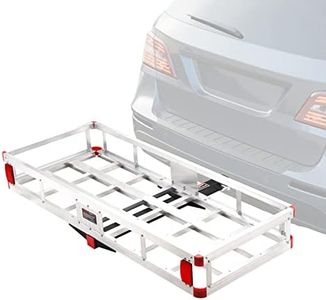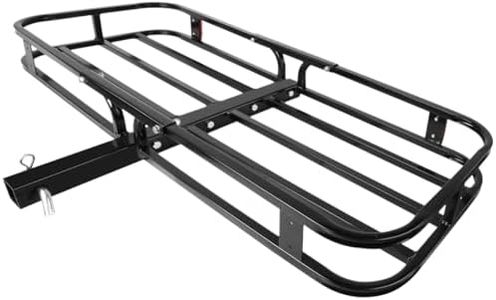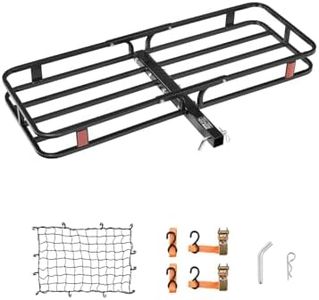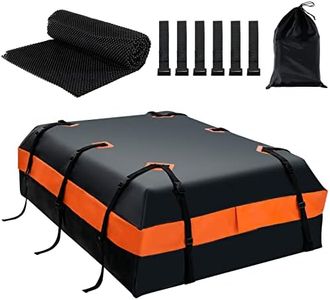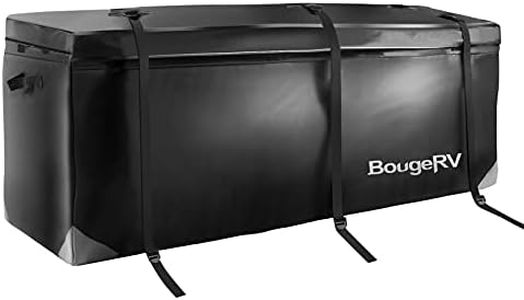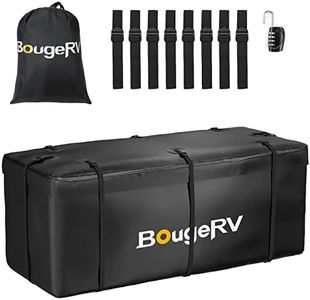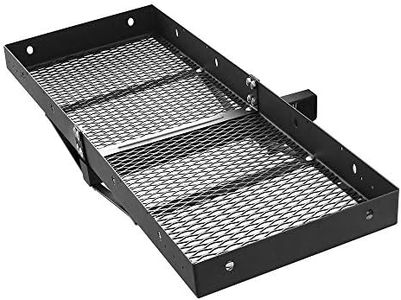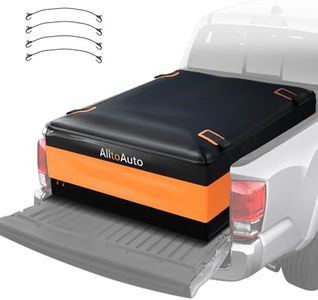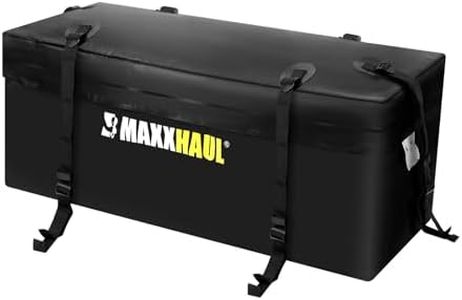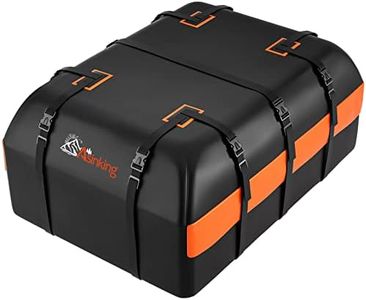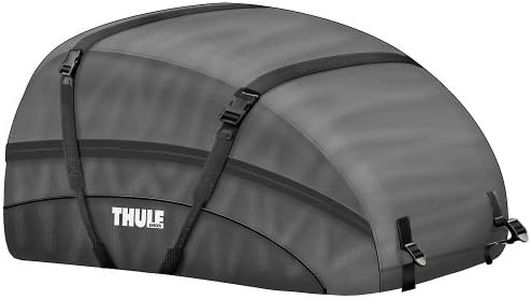We Use CookiesWe use cookies to enhance the security, performance,
functionality and for analytical and promotional activities. By continuing to browse this site you
are agreeing to our privacy policy
10 Best Rv Cargo Carriers
From leading brands and best sellers available on the web.Buying Guide for the Best Rv Cargo Carriers
Choosing the right RV cargo carrier is all about matching the storage solution to your travel lifestyle and the gear you plan to bring. RV cargo carriers can make life on the road easier by giving you extra space to haul bulky or messy items that you don’t want inside your RV. It’s worth considering factors like how much weight you need to carry, how easy you want loading and unloading to be, and what kinds of environments you'll be using the carrier in. Think about what you want to bring with you, how often you'll use the carrier, and how easily you want to access your stored items.Load CapacityLoad capacity shows how much weight the cargo carrier can safely handle. This spec is important because overloading a carrier can damage your RV and create safety hazards on the road. Values are typically expressed in pounds. Light-duty carriers (up to about 300 lbs) are suitable for things like camping gear or small coolers. Medium-duty options (300-500 lbs) work for bikes, heavier storage bins, or generators. Heavy-duty models (over 500 lbs) are good if you need to haul very bulky or weighty items. To choose the right load capacity, make a list of what you plan to carry and estimate the total weight—then add a safety margin. Never overload your carrier.
Carrier Size and DimensionsThis refers to the length, width, and height of the cargo platform or box. It’s important because it determines what you can fit in the carrier and whether it will fit on your RV. Small carriers are useful for compact gear or reserved mounting places; medium carriers cover most needs like bikes or several storage bins, while large carriers are meant for oversized items or groups traveling with a lot of gear. Match the size to the space available on your RV and the volume of items you want to carry—be sure to measure both your mounting area and your typical gear.
Mounting StyleCargo carriers may mount on the hitch, bumper, roof, or rear ladder of your RV. This matters because the mounting style affects accessibility, ease of installation, and what kind of RV you have. Hitch-mounted carriers are common and easy to load, roof-mounted types are best for lightweight or long items, and bumper or ladder options save space but may be trickier to access or install. Pick the mounting style that works with your RV’s available attachment points and your preference for loading height and convenience.
MaterialCargo carriers are made from materials like steel, aluminum, or durable plastic. Steel carriers are heavy but very sturdy and handle high weights well. Aluminum is lighter and rust-resistant, good for moderate loads and areas with frequent rain or snow. Plastic boxes or tubs are lightweight and resist weather but may not be as strong for heavy or sharp items. Think about the climate you’ll travel in and how much weight you need to carry; choose a material that balances strength, weight, and resistance to the elements.
Security and Weather ProtectionSome carriers are open platforms, while others are closed boxes with locks and weather seals. This feature is important if you need to protect gear from rain, dust, or theft. Open racks are easier to load and suit items that don’t need weather protection, like campsite equipment. Sealed carriers keep your gear dry and secure, which is important for electronics or valuables. Choose based on the type of gear you’ll carry and how much you care about weather protection and security.
Ease of Installation and AccessEase of installation means how quickly you can put the carrier on or take it off, and whether you need tools. Some carriers fold up or tilt down for easier access to your RV’s rear doors. If you plan to frequently put the carrier on and off, or access your RV’s rear storage or doors, opt for simpler installation and carriers with access-friendly features. Think about your own strength and comfort working with hardware, and whether you travel solo or with help.
